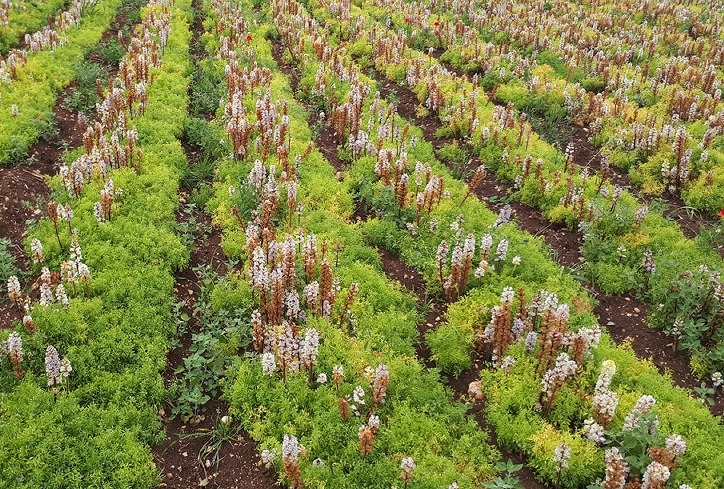
Vivace à tubercules, Cyperus rotundus est une espèce
du genre Cyperus et
de la famille des Cyperaceae.
Elle est nommée Souchet rond, Souchet
d'Asie, Souchet officinal, Herbe à oignon
ou Souchet à tubercule. Originaire d'Inde, elle s’est développée de l'Afrique au sud de l'Europe, puis a
étendu son aire de répartition sur une grande partie de la planète. Dans les régions
tropicales et tempérées chaudes, elle représente un véritable fléau pour beaucoup de cultures. Ses tubercules sont utilisés à des fins médici-
nales et alimentaires.
Écologie
Espèce invasive
Écologie
Originaire d'Inde, elle s’est
développée de l'Afrique au sud
de l'Europe, ainsi que dans le sud de l'Asie, l'Océanie, le Sud de l'Amérique du Nord et l'Amérique du Sud. En France, Cyperus rotundus est une espèce rare cantonnée
à la zone méditerranéenne.
Elle se développe
sur tout type
de sols. La limite nord de sa répartition semble être les régions où la tempéra- ture minimale moyenne
oscille autour de −5 °C, tempé- rature où le tubercule ne semble pas germer. Le facteur
« température » limiterait l'espèce aux
régions tropicales et tempérées chaudes. À l'inverse, elle peut survivre
aux plus grandes températures connues en agriculture.
Cyperus rotundus se plaît au sein des zones marécageuses, humides, les cultures de régions tropicales ou
tempérées chaudes, les patûres, et les bords
des chemins. Les tuber-
cules sont également une source
alimentaire des oiseaux migrateurs tels que les grues.
Espèce invasive
Cyperus rotundus est une des adventices les plus répan- due dans les régions tropicales et tempérées chaudes.
Elle a été élue “la plus grande
adventice du monde” en rai-
son de son impact dans plus de 90 pays et sur plus de 50 types de cultures du monde entier.
Elle est nommée “Mal de tête des
jardiniers” car son
expansion est très
ra- pide et difficilement contrôlable. Cette plante
a une crois- sance rapide et peut former des colonies denses en rai- son
de la production de son système rhizomatique tubé- reux souterrain d'où elle peut se régénérer
et se disper- ser très facilement. Elle
réduit les rendements de la canne à sucre, du maïs, du coton, du riz et des légumes.
La maîtrise des plantes adventices en agriculture
connaître les adventices pour les maîtriser en grandes cultures
connaître les adventices pour les maîtriser en grandes cultures






